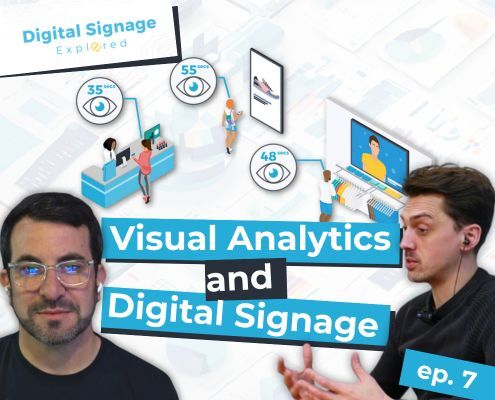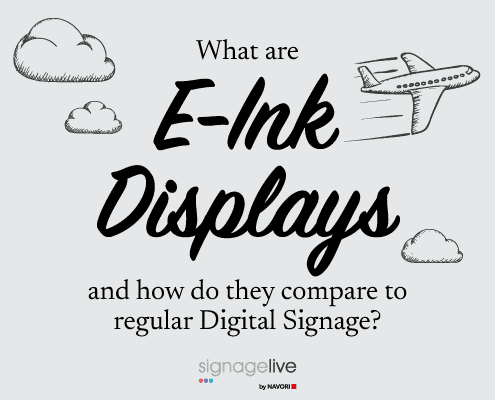AI is the latest buzzword in the world of tech, but how is it impacting Digital Signage, and what, if any, are the benefits? If you’re in the Digital Signage industry, or you’re a company simply interested in understanding how you can improve your digital communications, then you might be interested to know more about what it can do. You might also like to find out, if there are any risks, and what the technology is likely to be capable of in the future.
To help build a clearer picture about just what AI can offer, we’ve picked the brains of a leading expert, Raffi Vartian, who is at the forefront of its advance as Vice President of Business Development for global cloud-based AI company, meldCX.
This company specialises in “computer vision” or “vision AI” – a type of artificial intelligence (AI) that is beginning to be influential in the Digital Signage sector.
So, what exactly is computer vision?
According to Raffi, computer vision is “still in its infancy”, but it is already enabling the kind of personalised and targeted advertising that brick-and-mortar businesses have – so far, been unable to achieve in-store. It requires the use of an AI-enabled camera above every screen, and, in the case of the meldCX solution, specifically an edge AI camera, so that kilobytes as opposed to terabytes of data can be collected. This enables visual data to be gathered from, as Raffi explains “every second of every frame of local footage”.
The data is then uploaded to the cloud, where it’s analysed to understand generic traits and patterns of behaviour that can be attributed to different customer/employee/visitor types. The point is, if you can understand general persona traits and behaviours, then you can use the AI cameras to recognise the signs that make people more likely to take the actions you want. A business is then in a good position to use their Digital Signage systems to trigger more targeted advertising, every time the AI camera detects these signs. It’s a way of highlighting call to action (CTA) opportunities, optimising the on-screen content for persona types who are most likely to be tempted by the propositions on offer. According to Raffi, it’s the first step towards making brick-and-mortar customer/visitor experiences more comparable to those online.
When you shop with online retailers, Raffi says, they have collated “enough data on you to help personalise your shopping experience and develop customised recommendations for you”. This considerably improves your brand experience with them, and often, tempts you to spend more money and/or time on their platforms.
“You literally get”, Raffi insists, “passing moments, where somebody moves their head and takes a look.” This kind of responsive, personalised Digital Signage helps you make the most of such small windows of time. Take a grocery store user case scenario as an example. Pre-specified target personas, like adults with small children could, for example, be automatically shown the latest toys and child-friendly meals and sweets. Alternatively, if a man with a specific brand of beanie hat is detected by the camera, then other menswear accessories, such as scarves from the same brand could be triggered to appear on any nearby screen. It’s an effective way of helping to support cross-selling opportunities.
How to use AI with Digital Signage software
Content management systems (CMS), such as Signagelive offer the means for targeted content to be displayed automatically on-screen. Integrated with meldCX, such platforms, with their web trigger capability, can be used alongside compatible solutions, like Nexmosphere to ensure that exactly the right content is displayed for different types of customers/employees/visitors.
What about data privacy and security?
With meldCX and Signagelive, data privacy is never violated. MeldCX obscures faces or other features by which people can be identified in the memory of whatever edge device is being used. The insights collected are based on anonymous customer information, and are never stored on any hard disk, where they could be hacked and accessed. What’s more, AI models are only trained for exactly the data customers are looking for, so they can’t be used to gain illicit information about anything else.
Signagelive is similarly security-conscious, having earned its credentials as an ISO-27001-certified company, which essentially means that it is equipped to protect large volumes of even the most highly sensitive data.
According to Raffi, there is no end of potential for computer vision in the Digital Signage sector. Most brick-and-mortar businesses – as yet, don’t have any form or means of personalisation when it comes to in-store marketing. Right now, most targeted advertising is still restricted to billboard campaigns, and content is simply localised rather than personalised for different people.
What is the future of AI for Digital Signage?
According to Raffi, it’s likely that, in the future, instead of having to “click around” for information, businesses will be able to “have a conversation with” their data. Right now, the meldCX platform ensures that data can be “visualised so customers can make sense of it”, and understand, for instance, when they have a “peak in service times in a particular location”. In the future, however, it might be that you’re able to ask your data to filter the information by asking specific questions. The data itself could then, in response, also suggest other related data, and additional helpful breakdowns of the information, which might offer more insights.
Top tips from meldCX and Signagelive
If you are planning to explore what computer vision can do for your Digital Signage plans, then:
- Have lots of conversations to talk through what exactly you want to do. Without stakeholder buy-in, you’re likely to have to keep pausing, and stopping and re-starting your project. Consider the data everyone deems important and what parameters you need to interrogate it.
- Understand what you would like to achieve before making any plans. What items/services do you need to promote, how much more do you need to know about the ideal customer/visitor persona, and by how much do you need to improve sales/engagement/pick up etc?
- Be thoughtful and thorough. Without proper planning, you can abuse, even misuse AI data. Have a clear plan of what insights you need, and how you will ensure that the data you collect is anonymous and secure. Think about the security credentials of all the components and systems you use.
While there’s much to consider when it comes to AI, if you understand the technology, what exactly you need, and follow a few basis steps, it can significantly up your Digital Signage game.
Find out more about AI and what it can do for your Digital Signage plans in our latest Digital Signage Explored episode with Raffi Vartian here.





You must be logged in to post a comment.